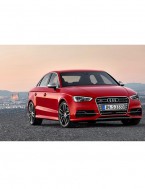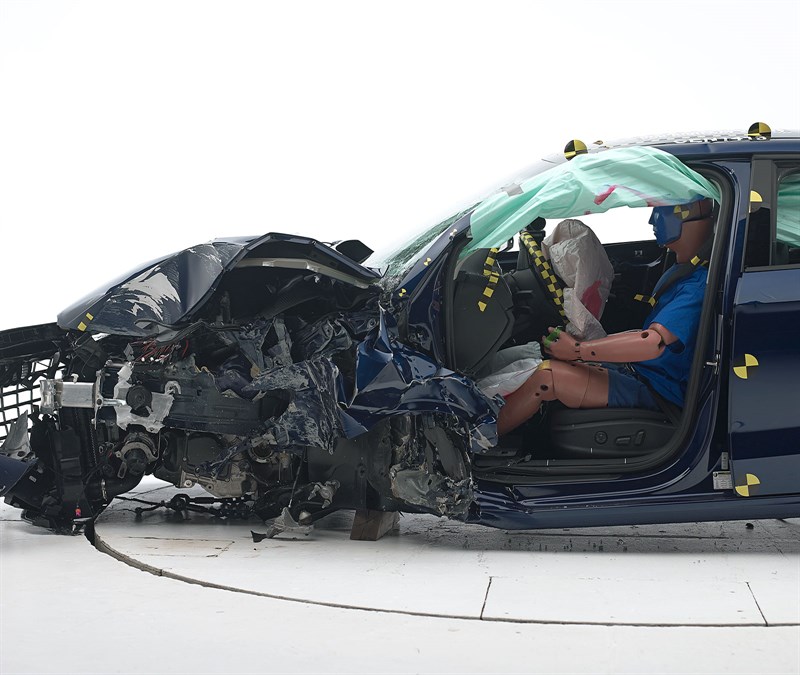
Today IIHS (Insurance Institute for Highway Safety) released its latest tests on the all-new 2015 Audi A3. Here are some really impressive key points:
- Small overlap frontal crash: the front crumple zone absorbs the impact energy beautifully. During the test the A3 cabin safety cage touches the crash object directly but with minimal deformation. Please pay attention that for those vehicles that passed this test, there are mainly two patterns: the first is to manage the car somehow “slide” over the crash object, the occupant compartment will avoid impacting with it directly, example such as the 2014 Volvo XC90; the second route is like Audi A3, the engine bay crumple zone absorbs the impact energy, which protects the occupant compartment even it directly “hit” the crash object.
- Roof strength: peak force reached 19,325lbs (this measures how large the forces can be applied to the roof of the vehicle before the roof starts to collapse), a pretty impressive result. If you do not have an idea how good this number is, here is another vehicle for your comparison: 2014 BMW 5 series peak force is only 15,364lbs.
Below is what the occupant compartment will look like after the small overlap crash test.
However, the Audi A3 still left us something to be desired.
For example in the moderate overlap frontal crash test, its performance is just so-so, especially the steering column rearward movement reaches 6cm, which does not match Audi brand’s market position. For comparison, even the Toyota Yaris sedan can limit the steering column rearward movement during the moderate overlap crash test, to be a much better result: 1cm; and the similar-weight Camry, can also manage to control this movement to be 4cm.
Also the side crash test shows that, it has a considerable possibility that the driver will suffer rib fracture plus a pelvis fracture in a crash with similar severity.
Overall the Audi A3 obtains the “Good” ratings on all major testing components, so IIHS awarded it the 2014 Top Safety Pick Plus reward.




Recent Comments